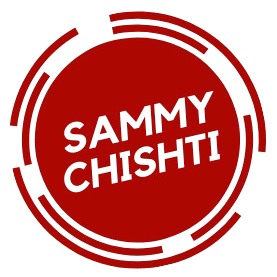31
If you listen to my weekly podcast or follow me on Instagram, you know I get really nerdy about all things pranayama. If you’re reading this in October 2022. My annual pranayama teacher training is around the corner. Every year when this comes about, I spend many weeks and months, creating and nerding out on pranayama content. There is so much to uncover about this rich, vast body of yoga as well as demystifying pranayama myths.
One such myth is often pranayama & meditation are used interchangeably. In fact, for the longest time, I thought they were the same if not similar. If you think about it, they’re both more introspective practices, seated, eyes closed. Both bring you a deeper sense of calm and clarity?
But honestly, this is a very narrow way of looking at things.
Pranayama & Meditation are not the same things. But before we explore that you must first have clarity on what Pranayama and Meditation are according to yoga.
What is pranayama?
The term pranayama is used to refer to a large body of work in yoga that deals with prana aka our life force. This life force exists from the moment of conception to well after death. Prana is a life force within each of us that governs every aspect of our existence. From maintaining physical well-being to even the quality of our thoughts. Prana pervades every layer of human experience. This prana gets blocked or depleted based on our interactions with the outer world and urban lifestyles.
When prana is depleted, disturbed, or blocked., we experience issues at different levels. Physically these could show up as ailments, low energy, indigestion etc…but this could also manifest as a restless mind, lack of clarity, impulsivity etc…
When prana is depleted, we lose our ability to thrive. In order to keep our prana flowing and functioning optimally, we have asanas and pranayama techniques. Asana removes physical blockages while pranayama techniques reboot and replenish our pranic stores of energy.
There are also different types of prana that govern different regions of the body. But more on that another time.
What is meditation?
The Sanskrit word for meditation is called dhyana. There are many different types, schools, or approaches to meditation today. But in yoga, meditation is considered to be a necessary practice towards self-realization. Meditation is the act where the meditator and the object of meditation merge and become one.
Pranayama comes before meditation in yoga
This right here is your answer. Patanjali’s 8 limbs of yoga, pranayama, and dhyana (meditation) are different. Pranayama is the 4th limb of yoga whereas dhyana is the 7th limb of yoga.
Further exploration of this will reveal that pranayama is considered to be, “bahir anga”. Meaning an external limb of yoga or an external practice. Meaning you’re still in some form engaging with your external world. Whereas, dhyana is considered to be an “antar anga” aka an internal limb of yoga. Where the process becomes more withdrawn from the external world. Is not tangible or visible to the naked eye. Is completely experiential or embodied.
The main differences between the two are…
Action versus being
The study of pranayama involves the act of working with pranayama techniques. Where you engage your senses to “work on” your breathing. This usually involves stretching, manipulating, and modifying the breath in some capacity. There are many different techniques for pranayama. Depending on your goals or needs. But when you’re learning pranayama, its an active practice of listening to the instructions and trying to execute them in a certain way.
Meditation on the other hand. Can be guided or unguided. But most of the process happens when you withdraw your senses from the world and turn them inward.
Pranayama and meditation have different goals
The goal for pranayama for yogis was different than what it is for you and me. Nowadays most people come to pranayama for health and wellness reasons. The goal of meditation is to connect more deeply with yourself – to bring you a sense of calm. But in actuality, the goal of meditation was self-realization. The goal of pranayama is not self-realization but a means to connect more deeply with yourself and your prana.
Pranayama prepares you for meditation
In pranayama, you train your concentration. To focus on minute sensations and experiences of the breath. You refine your body awareness and your skills of perception. You learn to sit and steady. All of these are necessary skills for meditation. The ability to witness your inner experience without judgment. Think of pranayama as a training ground for meditation. Once you can withdraw your senses and enhance your ability to concentrate. You will be able to meditate with more ease.
I hope this helps clarify why pranayama and meditation aren’t the same. If you have questions, feel free to leave them in the comments for me below.
